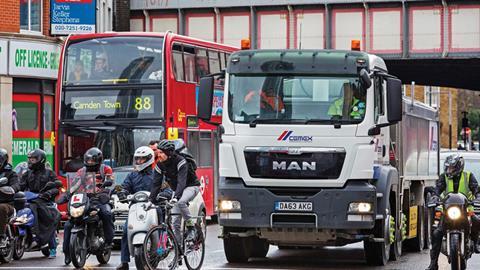Fleet broking insurance specialist, McCarron Coates, is warning fleet operators to check their drivers have updated themselves on the rules of the 2022 Highway Code.
The broker is recommending they proactively take drivers through the latest edition of the Highway Code, test their knowledge of key aspects of driving and have them sign a document to show they have undergone the induction or refresher training and keep that evidence on file.
The warning comes after independent research, commissioned by McCarron Coates, showed that over a quarter of people (26%) say they have not read the Highway Code in the past 10 years.
Additionally, 20% have not read the Highway Code since passing their test. This rises to 21% of over-55s, who may well have taken their test in their late teens or early twenties.
The company said: ”Whilst fleets may be diligent in checking licences and permissions to drive certain classes of vehicle, it is less likely they assess whether there is up-to-date knowledge of the Highway Code. If using foreign drivers, there is even the likelihood that they have never read the Highway Code.
The broker points to the introduction of the a Hierarchy of Road Users in the 2022 Highway Code as an example of key changes. The clause made drivers of HGVs, buses and coaches more responsible than other users of the road for the safety of others. Yet, 11% of respondents to the McCarron Coates survey openly admitted they did not know what the Hierarchy of Road Users referred to. This rose to 15% of over-55s.
In addition,17% said cyclists are not allowed to ride down the middle of the road at any time. This rose to 20% of 25-34-year-olds. This is despite the 2022 Highway Code specifically stating that cyclists can use the middle of quiet roads, narrow roads and those with slow moving traffic.
More than one-in-twenty (6%) overall, and 15% of over-55s, said that pedestrians who had started to cross a road did not have the right to continue to do so, as cars and other vehicles have priority. This is the reverse of what Highway Code H2 states. It directs motorists that: “At a junction you should give way to pedestrians crossing or waiting to cross a road into which or from which you are turning.”
Rule 8 then states, to direct pedestrians: “At a junction, when you are crossing or waiting to cross the road, other traffic should give way. Look out for traffic turning into the road, especially from behind you, and cross at a place where drivers can see you. If you have started crossing and traffic wants to turn into the road, you have priority and they should give way.”
Director, Paul Coates (pictured) said: ”Not knowing the rules or what the law now views as ‘safe driving’ can be disastrous and a threat to both livelihood and liberty.
”For example, drivers are now expected to anticipate actions much more than previously, when they probably knew to be extra careful around buses at bus stops, school buses and ice cream vans. Now, a lot of this is subjective and confusing.
“For instance, if a pedestrian is on the pavement’s edge as an HGV starts to turn into a road, should the driver have anticipated that they would step off, if they then do so and are struck? What does “started to cross” actually mean in reality? Is it lifting a foot, being off the pavement or something else?
“It’s very open to interpretation but also to potentially misleading statements, if there is no actual proof as to whether the pedestrian had taken a step off the pavement or not.
”Did they “start to cross”. What does “waiting to cross” mean? Could it include “anticipating being able to cross”, if they are jogging down the street but not physically stood still?
”We would advise fleets to train drivers to think about these scenarios, know the rules and ensure that drivers make the correct call within them. Having cameras that can provide evidence of what the situation actually was, is also vital.”
The lack of reference to the Highway Code is a major issue for fleet drivers in other ways too, the company warned.
The Code specifically makes them more responsible for other road users’ safety than any other group, yet many of the other road users in question have not referenced the new rules relating to driving.
“We believe we need to see a better integration of the Highway Code within day-to-day driving, by some sort of initiative that sees all drivers obliged to take a refresher test that assesses their knowledge of the Code,” Coates said.
“The Highway Code is now effectively the basis on which drivers can be imprisoned, thanks to its introduction of the Hierarchy of Road Users and yet there is no obligation to ever read it again, once you have passed your test. As our research shows, many drivers never do. That has to change, given the liability implications that it has created.”

















